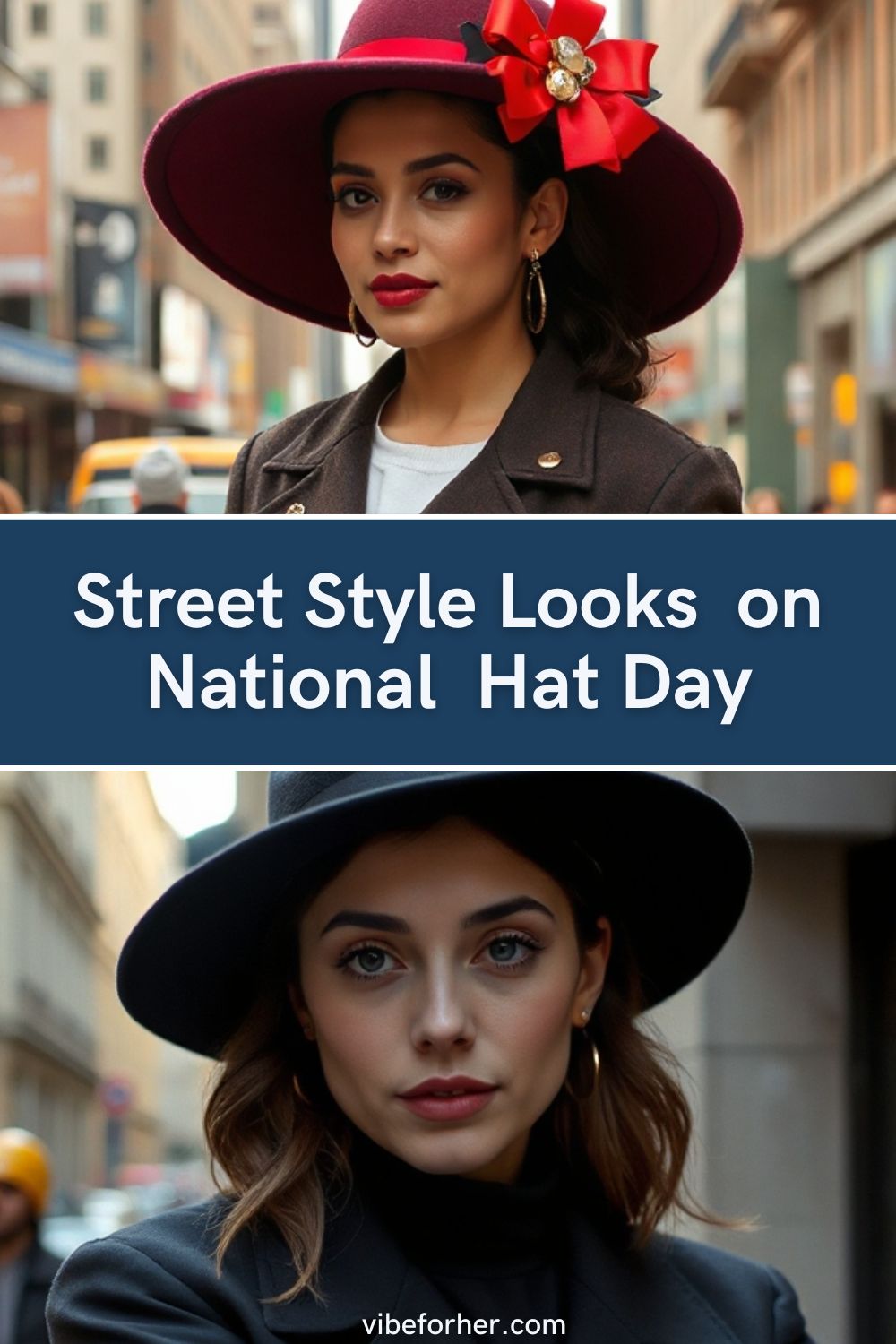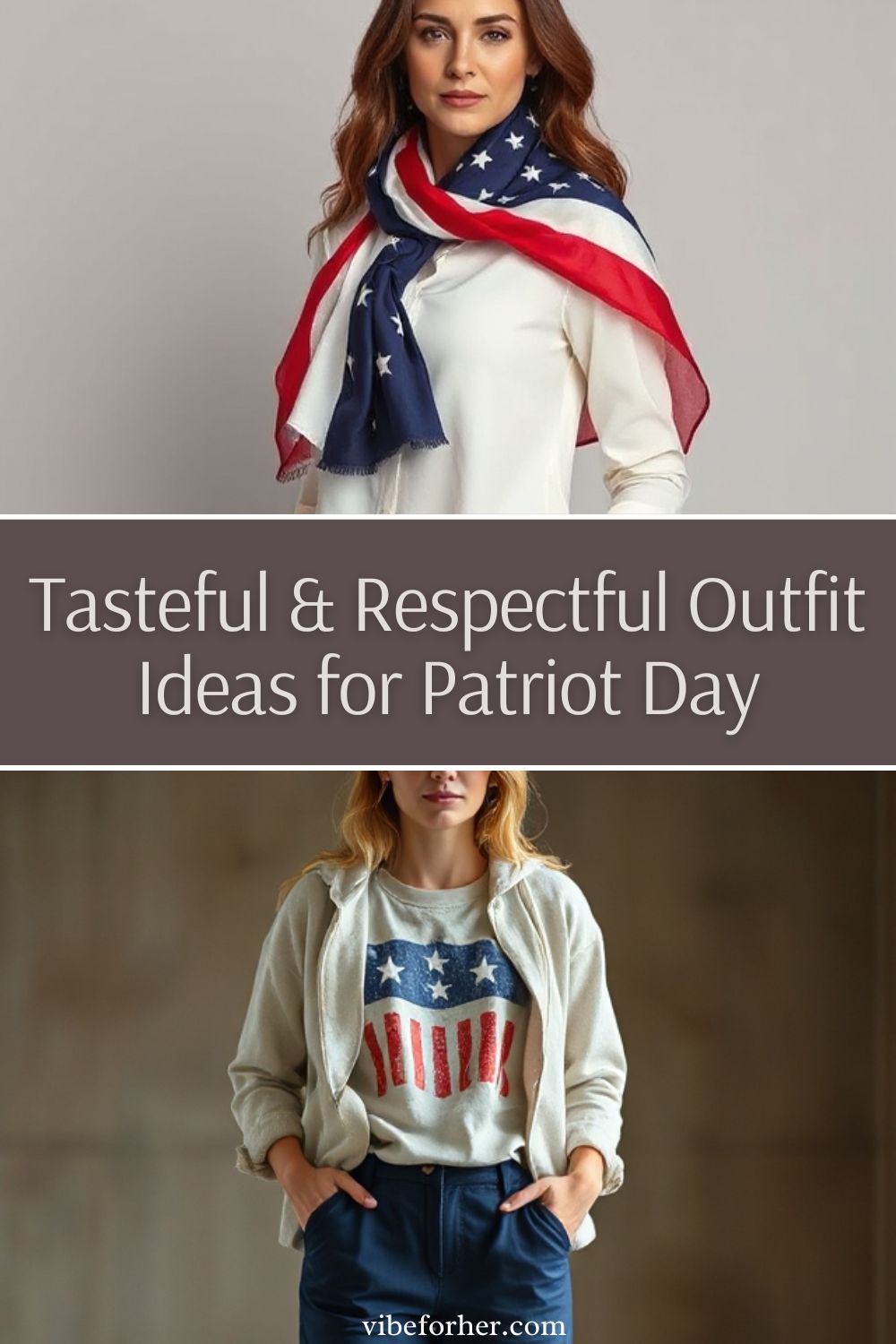
17 Unique Ethnic Outfits to Inspire Your Wardrobe Choices
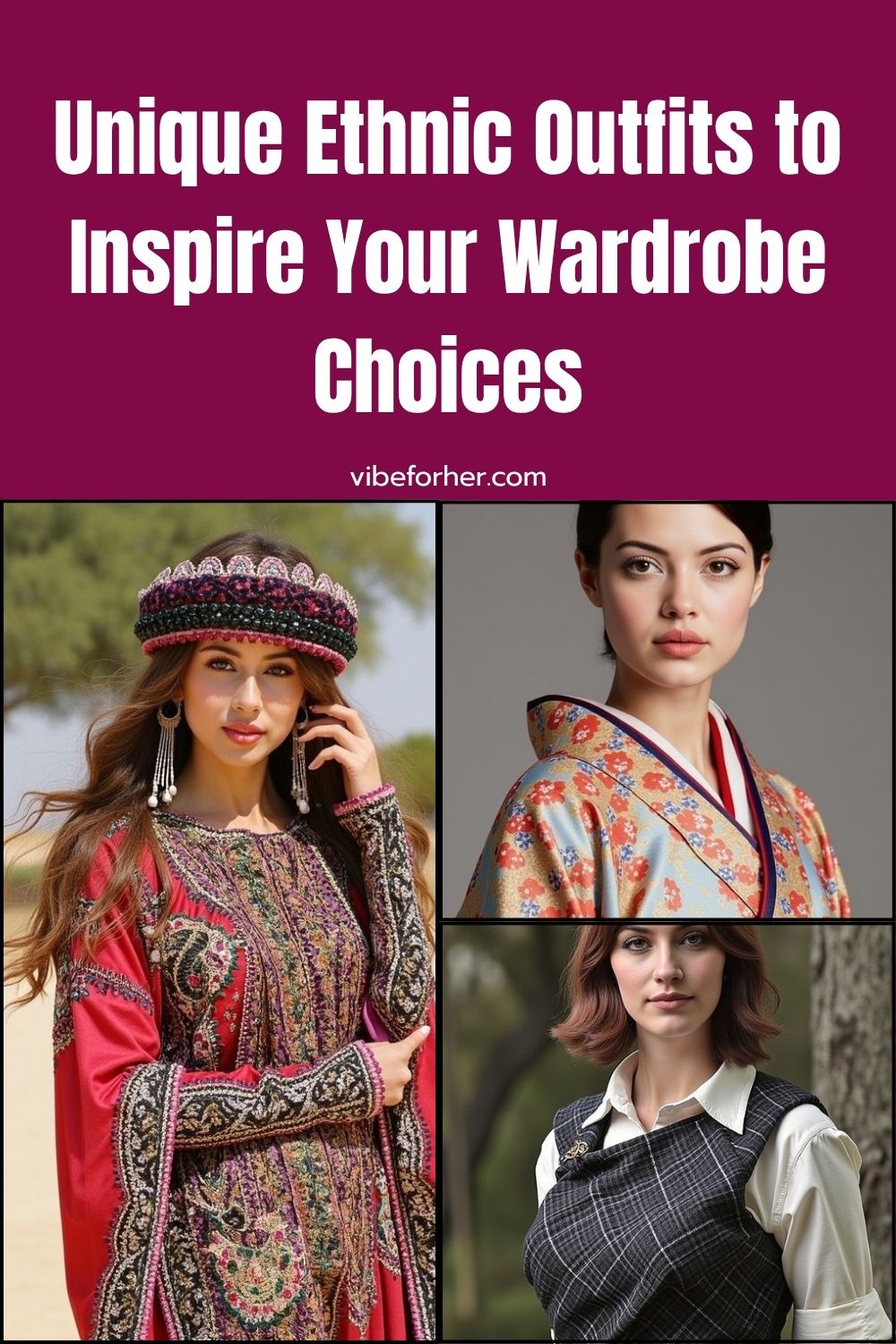
Hey, have you ever thought about updating your wardrobe with a splash of global flair? Imagine draping yourself in the vibrant silks of an Indian Saree or the structured elegance of a Japanese Kimono. Each of these 17 unique ethnic outfits carries a story of heritage and style. Curious about how they can transform your look? Stick around to uncover the timeless charm behind each piece.
Vibrant Indian Saree
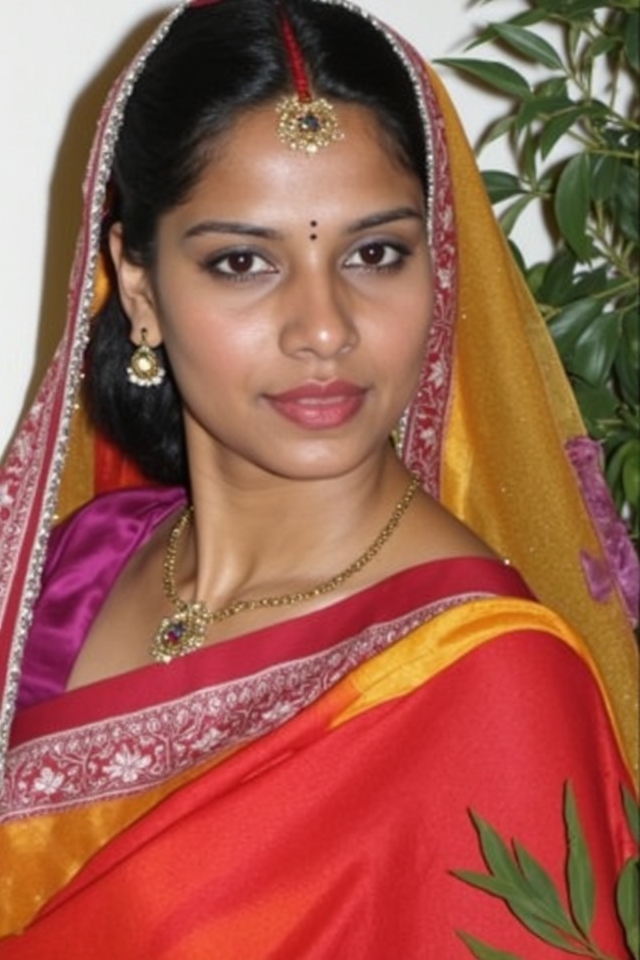
The vibrant Indian saree is a timeless symbol of elegance and cultural heritage. This traditional attire, often made of silk, cotton, or chiffon, drapes gracefully around the body, accentuating feminine beauty. Available in a myriad of colors, intricate patterns, and embellishments like zari or embroidery, sarees are perfect for weddings, festivals, and special occasions. Each region in India offers unique styles, such as the Banarasi, Kanjeevaram, or Bengali saree, reflecting diverse craftsmanship and traditions.
Elegant Japanese Kimono
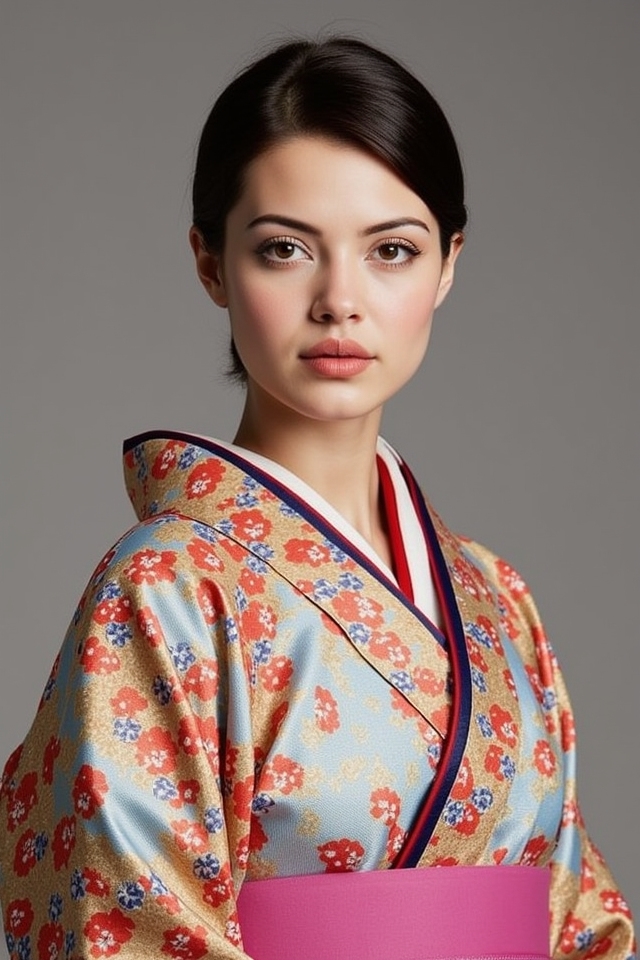
The elegant Japanese kimono is a traditional garment renowned for its timeless beauty and intricate craftsmanship. Made from fine silk or cotton, it features vibrant patterns and colors that often reflect the seasons or cultural motifs. Worn for special occasions like weddings and tea ceremonies, the kimono is styled with an obi sash, showcasing sophistication. Its long sleeves and flowing design symbolize grace, making it a cherished representation of Japanese heritage and artistry.
Colorful Mexican Huipil
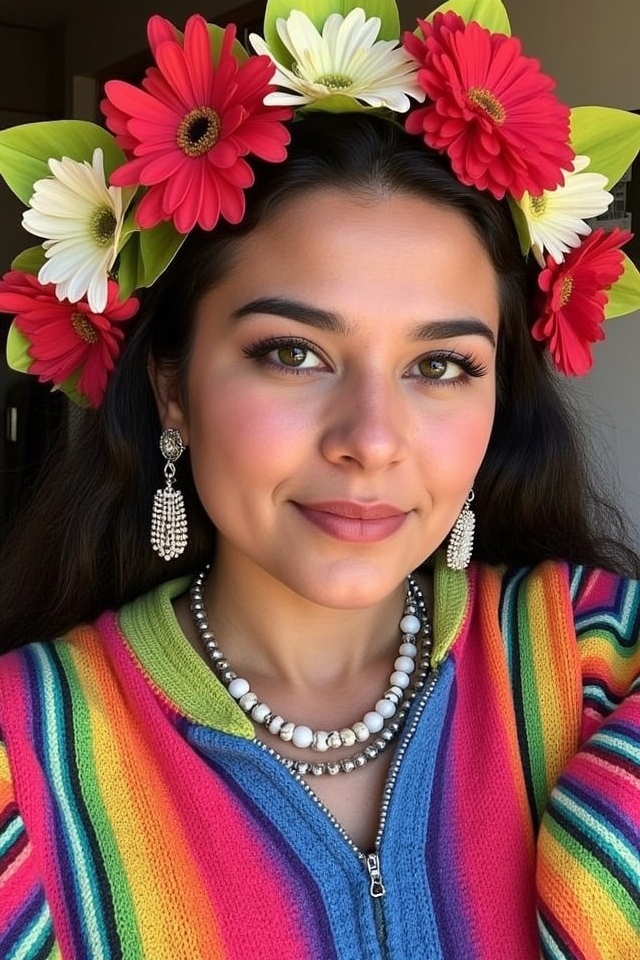
The colorful Mexican Huipil is a traditional garment worn by indigenous women in Mexico and Central America. This loose-fitting tunic is often made from cotton or wool and adorned with vibrant embroidery and intricate patterns that reflect cultural heritage. Typically featuring bright colors like red, blue, and yellow, the Huipil varies in style by region, with each design symbolizing community identity, personal expression, or ceremonial significance in celebrations and daily life.
Regal Nigerian Agbada
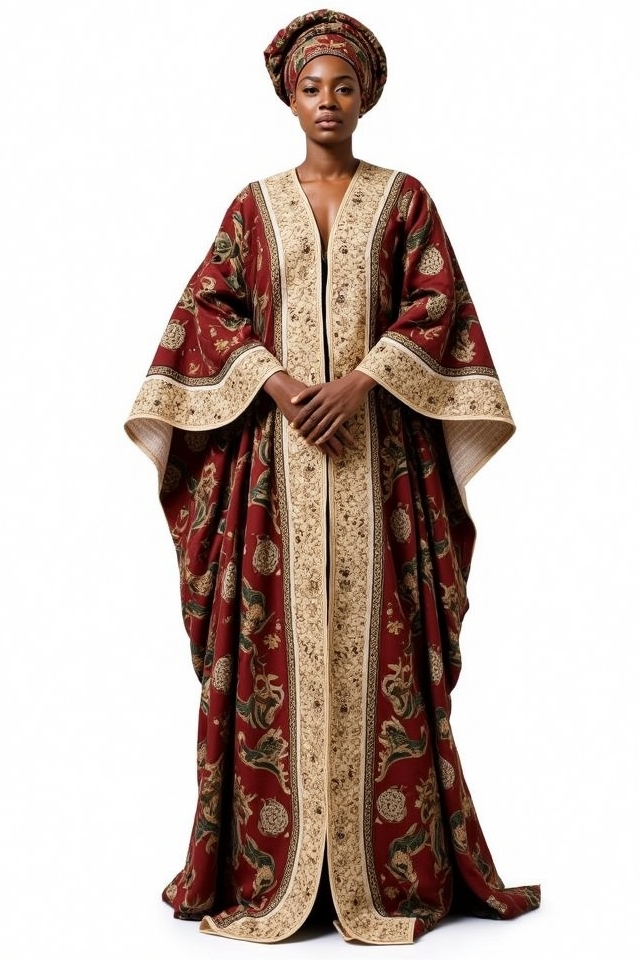
The Regal Nigerian Agbada is a traditional outfit that embodies elegance and cultural pride. This flowing, wide-sleeved robe, often made from vibrant fabrics like Ankara or lace, is typically worn by men during important ceremonies and celebrations. Paired with a matching cap and trousers, the Agbada is adorned with intricate embroidery, symbolizing status and sophistication. Its majestic design reflects the rich heritage of Nigerian fashion, making it a timeless choice for special occasions.
Traditional Scottish Kilt
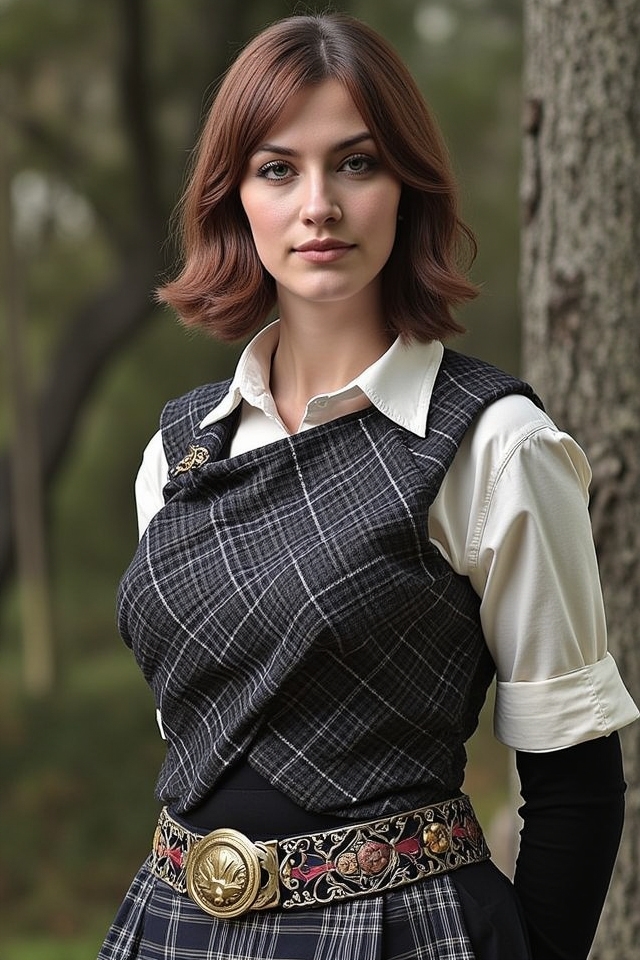
The traditional Scottish kilt is an iconic symbol of Scottish heritage, often associated with Highland culture. Typically made of wool and featuring a tartan pattern, the kilt is a knee-length garment worn by men, pleated at the back for ease of movement. It is commonly paired with accessories like a sporran, kilt pin, and knee-high socks. Worn during ceremonies and cultural events, the kilt represents pride in Scottish identity and history.
Intricate Thai Chut Thai
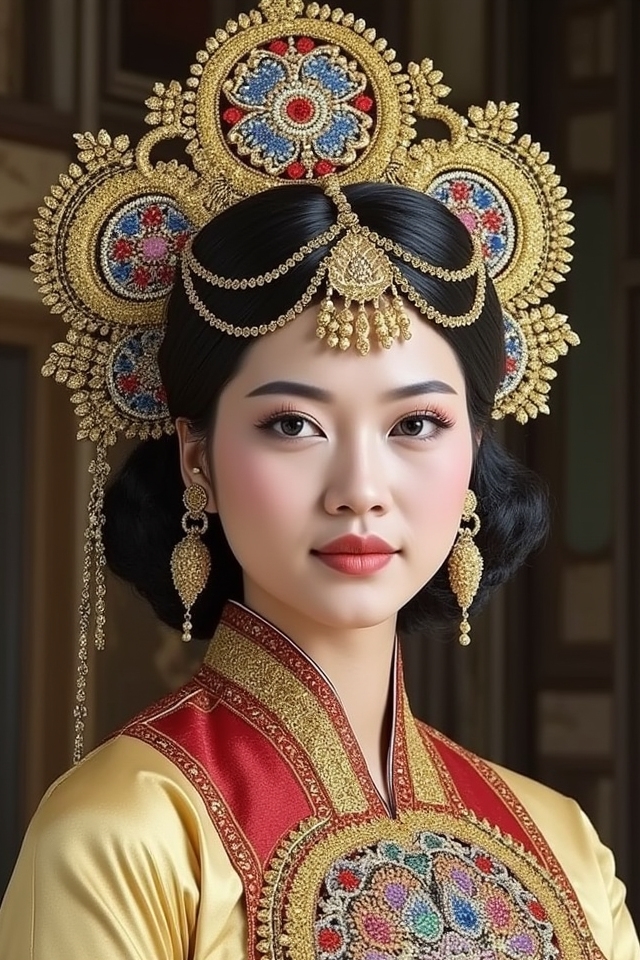
The intricate Thai Chut Thai is a traditional ensemble that embodies the elegance and cultural richness of Thailand. Worn during significant ceremonies and festivals, it features detailed craftsmanship with vibrant silk fabrics, ornate embroidery, and gold-threaded patterns. The outfit varies by region and occasion, often including a fitted blouse, a sarong-like skirt called “pha nung,” and a sash. Its meticulous design reflects Thai heritage, making it a symbol of national pride and identity.
Stunning Moroccan Kaftan
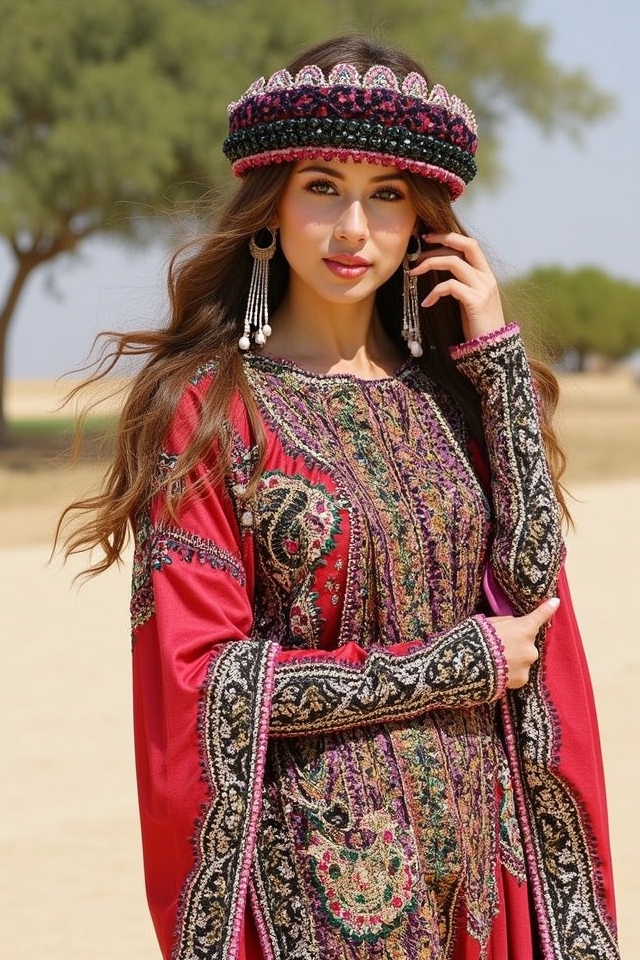
The Moroccan Kaftan is a breathtaking traditional garment, renowned for its elegant, flowing silhouette and intricate craftsmanship. Often made from luxurious fabrics like silk or velvet, it features vibrant colors, elaborate embroidery, and ornate embellishments such as beads or sequins. Worn during special occasions and weddings, the kaftan reflects Morocco’s rich cultural heritage. Its loose fit guarantees comfort, while the detailed designs exude sophistication, making it a timeless symbol of Moroccan style and tradition.
Bold Maasai Shuka From Kenya
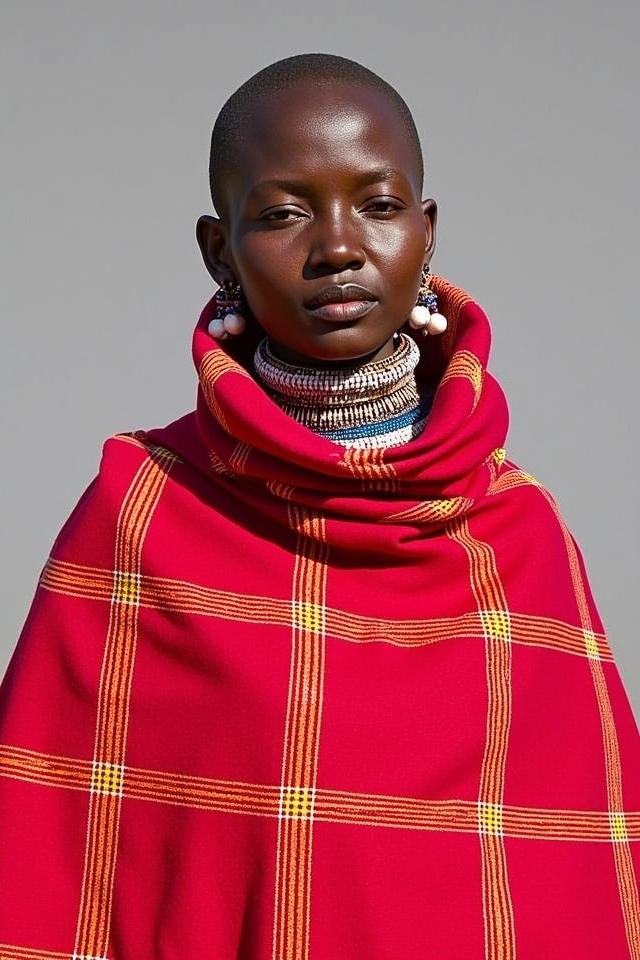
The Bold Maasai Shuka from Kenya is a vibrant and iconic traditional garment worn by the Maasai people. Made from brightly colored, often red, fabric with striking patterns like checks or stripes, the shuka is draped over the shoulders or wrapped around the body. It symbolizes cultural pride and resilience, often paired with intricate beaded jewelry. This versatile cloth is both practical for the semi-nomadic lifestyle and a powerful statement of Maasai identity.
Graceful Vietnamese Ao Dai
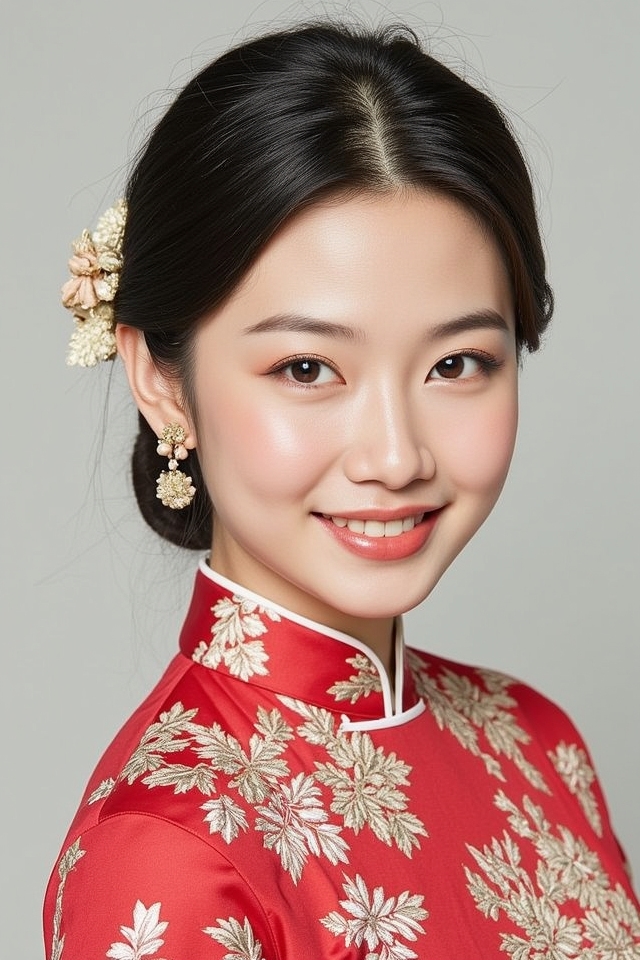
The Vietnamese Ao Dai is a timeless symbol of elegance and grace, embodying the rich cultural heritage of Vietnam. This traditional dress features a long, form-fitting tunic with high slits on both sides, worn over loose trousers. Often made from silk or satin, the Ao Dai is adorned with intricate embroidery or vibrant patterns, reflecting the wearer’s personal style. It is commonly worn during festivals, weddings, and formal occasions, exuding sophistication and national pride.
Festive German Dirndl
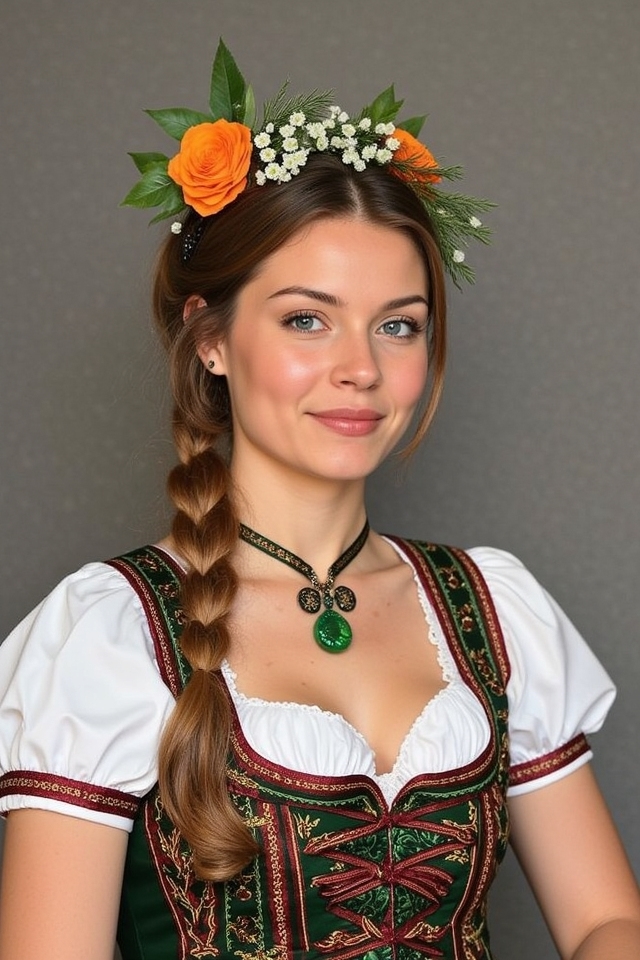
The Festive German Dirndl is a traditional Bavarian dress, often worn during cultural celebrations like Oktoberfest. It typically features a fitted bodice, a full skirt, and a decorative apron, showcasing intricate embroidery and vibrant colors such as red, green, or blue. Paired with a white blouse, it exudes charm and femininity. The dirndl represents German heritage and is a symbol of festivity, making it a popular choice for folk festivals and themed events.
Timeless Greek Chiton
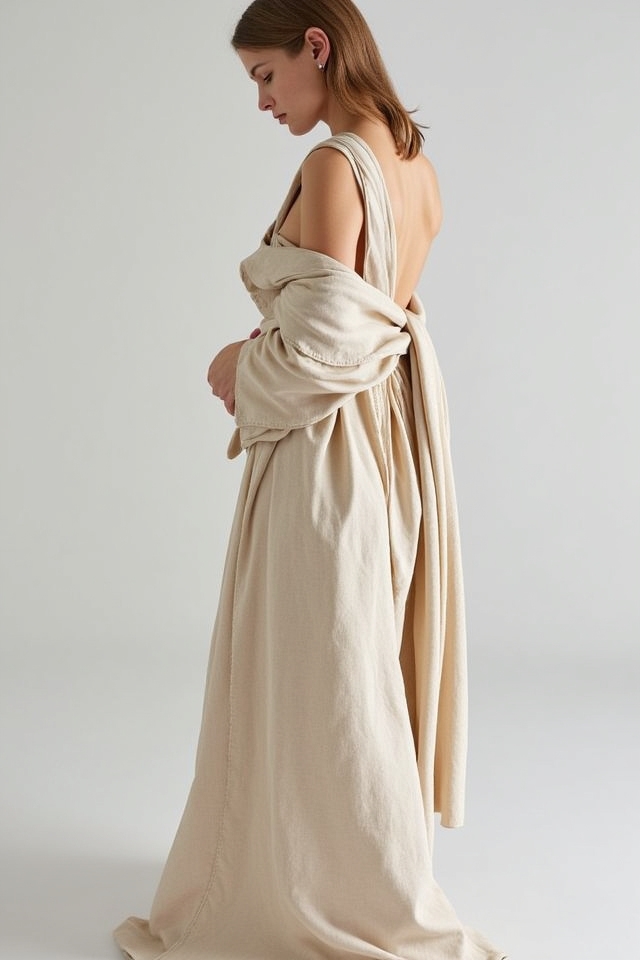
The Timeless Greek Chiton is an iconic garment from ancient Greece, embodying simplicity and elegance. Made from lightweight fabrics like linen or wool, it was draped over the body and secured with pins or belts, creating graceful folds. Worn by both men and women, the chiton varied in length and style, reflecting social status. Its flowing silhouette remains a symbol of classical beauty, inspiring modern fashion with its minimalist yet sophisticated design.
Striking Peruvian Poncho
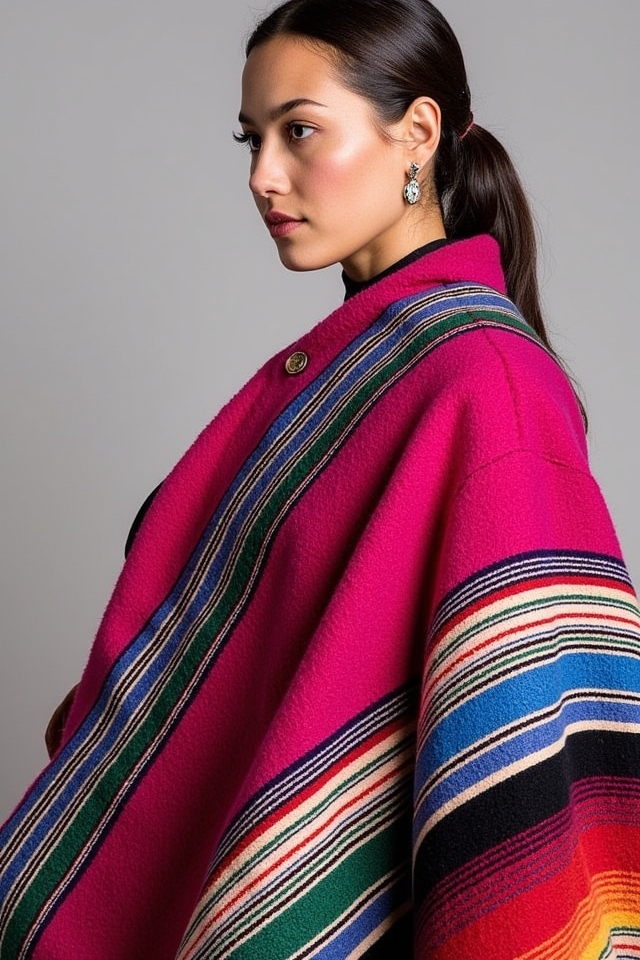
The Striking Peruvian Poncho is a vibrant and iconic piece of traditional Andean clothing. Crafted from wool or alpaca, it showcases intricate patterns and bold colors that reflect Peru’s rich cultural heritage. Often worn for warmth in the highlands, this poncho features a simple yet elegant design with a central opening for the head. Its versatility makes it a popular choice for festivals, daily wear, and as a symbol of Peruvian identity.
Beautiful Korean Hanbok
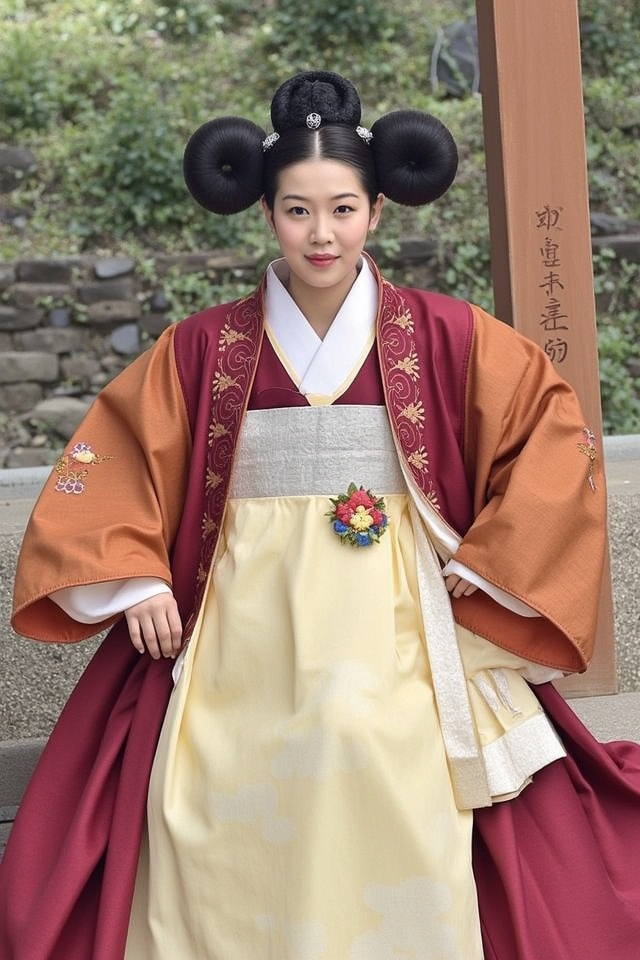
The Korean Hanbok is a stunning traditional outfit that embodies elegance and cultural heritage. Known for its vibrant colors and graceful lines, the Hanbok consists of a jeogori (jacket) and chima (skirt) for women, while men wear a jeogori with baji (pants). Often adorned with intricate embroidery, it is worn during festivals, weddings, and other significant occasions. The Hanbok reflects Korea’s rich history and remains a cherished symbol of national identity.
Ornate Russian Sarafan
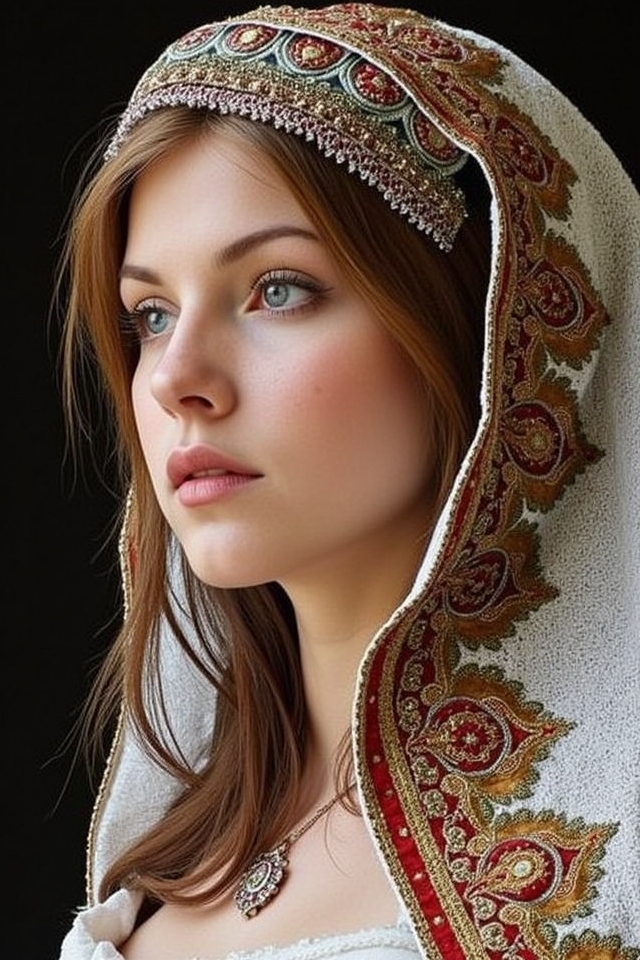
The ornate Russian Sarafan is a traditional dress worn by women, characterized by its vibrant colors and intricate embroidery. Typically made of linen or wool, this long, sleeveless garment features a flared silhouette that enhances its elegance. Often adorned with floral patterns, geometric designs, and sometimes beadwork, the sarafan is paired with a blouse and a decorative apron. Worn during festivals and ceremonies, it reflects Russia’s rich cultural heritage and craftsmanship.
Majestic Arabian Thobe
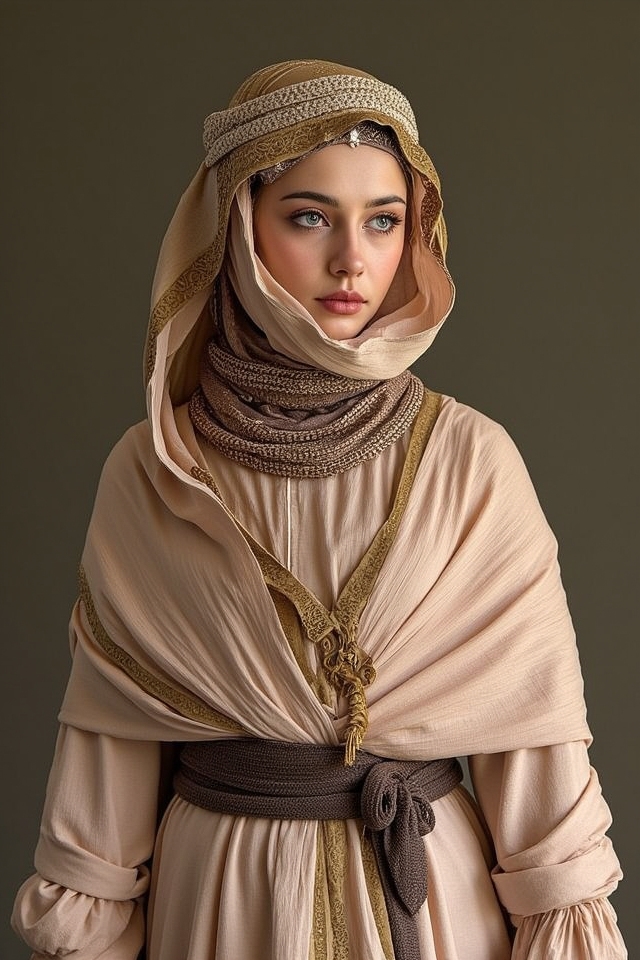
The Majestic Arabian Thobe is a traditional garment worn by men in the Arabian Peninsula, embodying elegance and cultural heritage. Typically made of fine cotton or wool, it is a long, flowing robe that offers comfort in the region’s hot climate. Often white, symbolizing purity, it may also come in darker shades for formal occasions. Adorned with subtle embroidery or tailored fits, the thobe reflects sophistication and is commonly paired with a headscarf or agal.
Charming Brazilian Baiana Dress
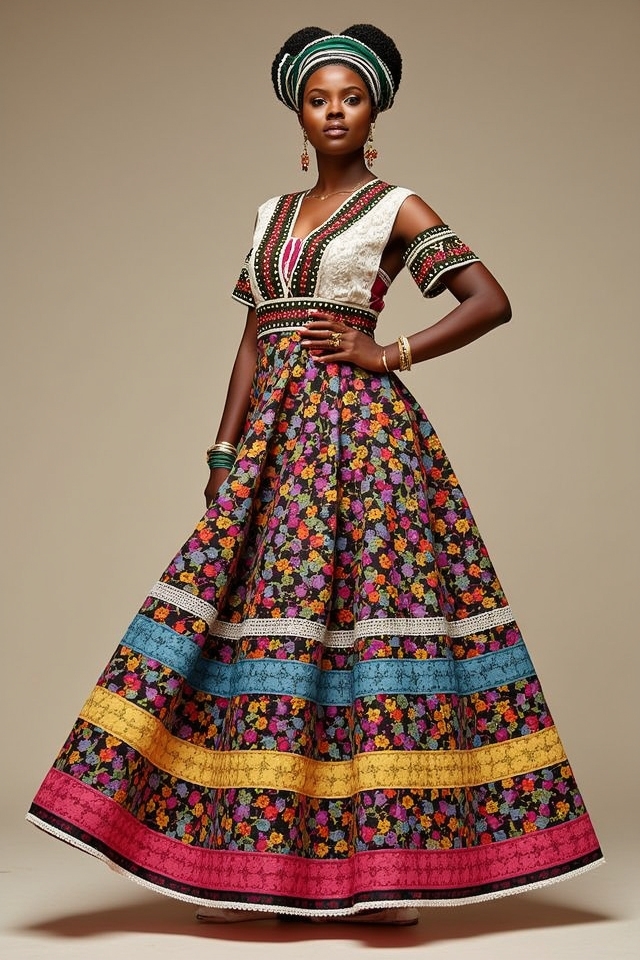
The Brazilian Baiana dress is a vibrant and iconic outfit rooted in Afro-Brazilian culture, particularly from Bahia. Characterized by its flowing, wide skirt, colorful fabrics, and intricate headwraps, it reflects a blend of African heritage and Brazilian flair. Often adorned with lace and embroidery, the dress is traditionally worn during cultural festivals like Carnival and religious ceremonies. Paired with bold accessories, the Baiana dress embodies charm, elegance, and a deep connection to history.
Exquisite Chinese Cheongsam
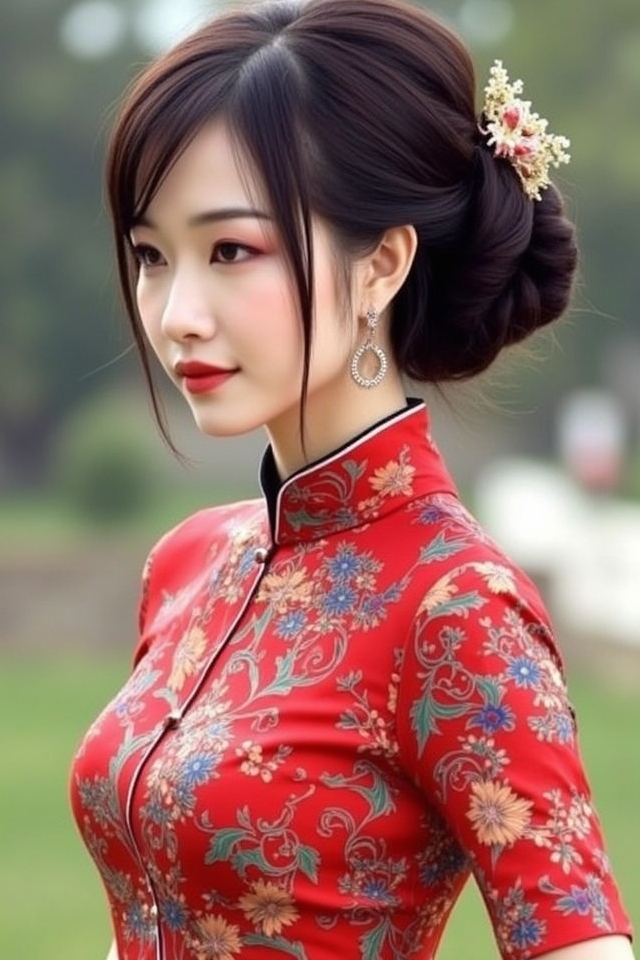
The Chinese Cheongsam, also known as Qipao, is a timeless and elegant traditional dress that originated during the Qing Dynasty. Characterized by its form-fitting silhouette, high collar, and side slits, it beautifully accentuates the feminine figure. Often made from luxurious silk or satin, the Cheongsam is adorned with intricate embroidery or floral patterns, symbolizing grace and sophistication. It remains a popular choice for formal occasions, weddings, and cultural celebrations, embodying the rich heritage of Chinese fashion.
Conclusion
Ready to elevate your wardrobe? Plunge into these 17 unique ethnic outfits and let their cultural charm inspire you! Whether you’re draping a vibrant Indian Saree, slipping into a sleek Chinese Cheongsam, or rocking a bold Nigerian Agbada, you’ll turn heads with timeless elegance. Mix intricate embroidery, bold patterns, and rich fabrics into your everyday looks or special occasions. Embrace global style—make heritage your trendiest accessory starting today!

